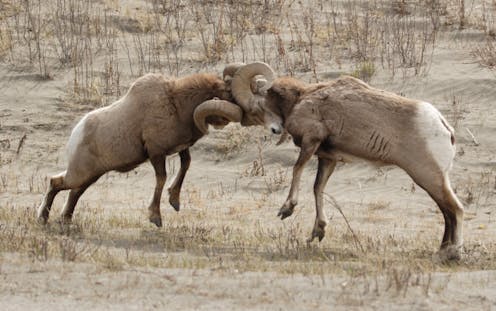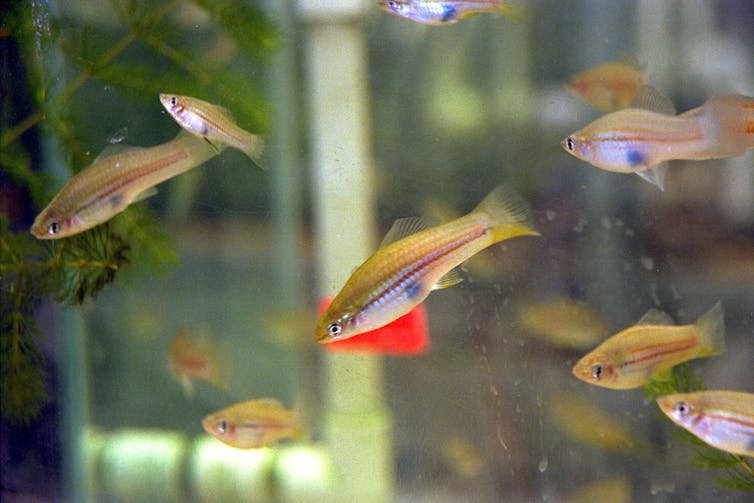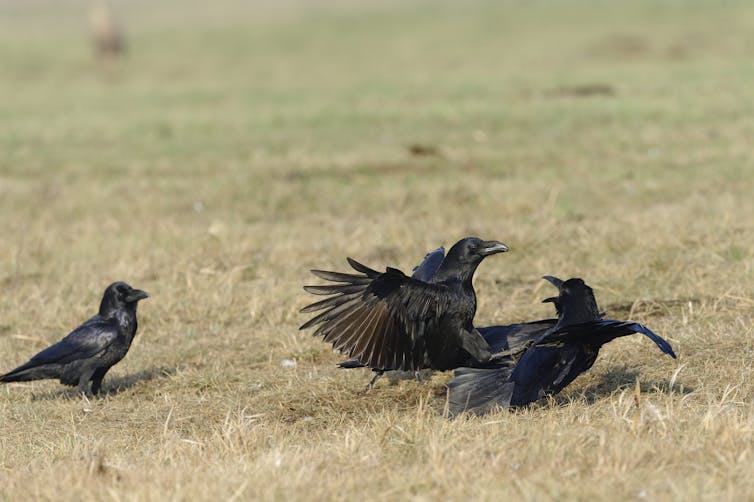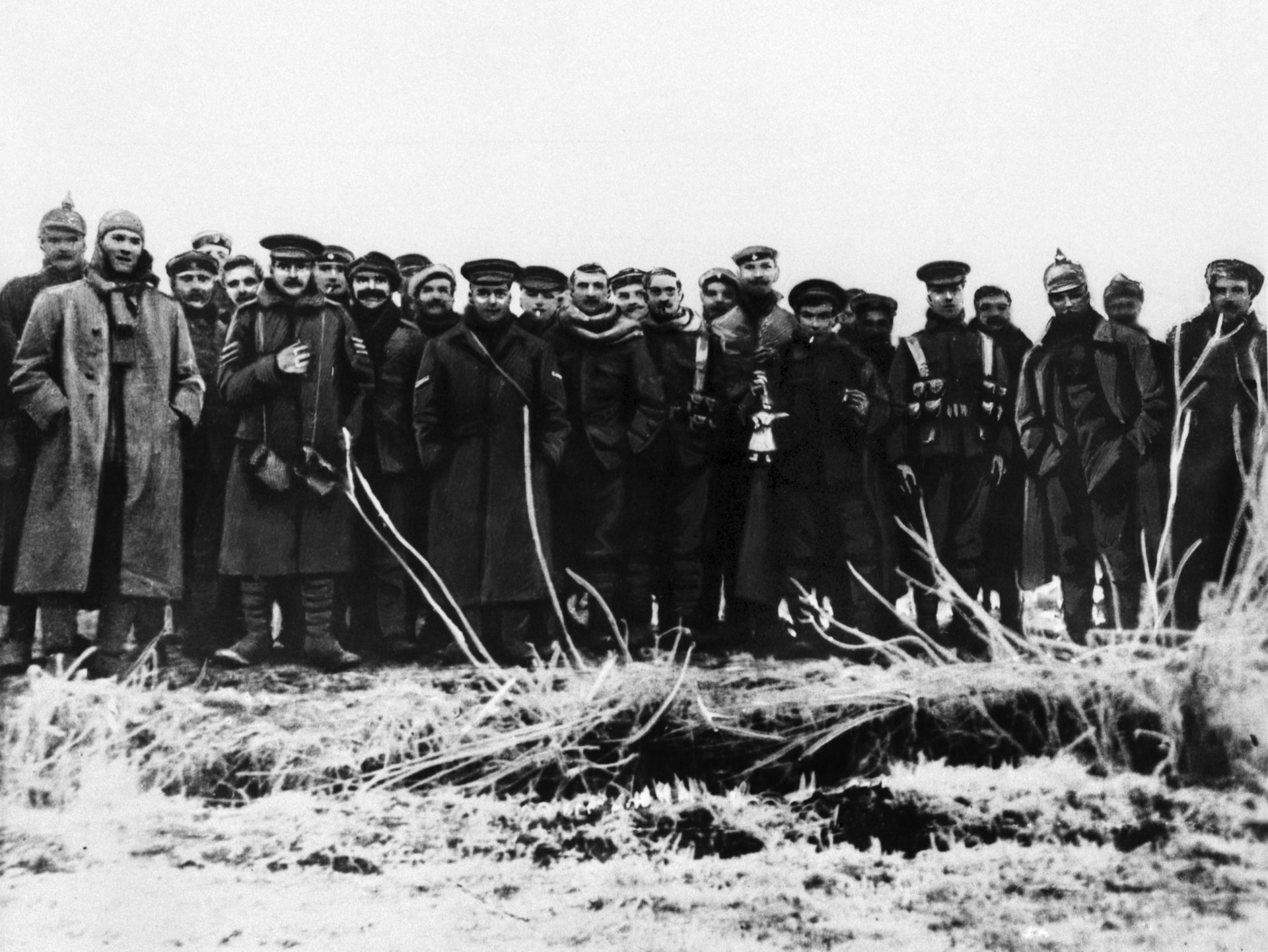Power struggles in nature can be more subtle, nuanced and strategic than just dog-eat-dog
Life can be a struggle for power – not just for people but for nonhuman animals, too. An animal behaviorist explains how this quest can be more Shakespearean drama than boxing match.

Scientists used to think power in animals played out in a tidy and simple way. Nature is a dog-eat-dog place. Rams butt heads in a thunderous spectacle, and the winning male gets to mate with a female. Bigger, stronger, meaner animals beat up smaller, weaker, more timid ones, and then walk, fly or swim away with the prize.
All that’s certainly going on in the wild. But the natural world, it turns out, is so much more interesting than simply squaring off in brutish battles. As in tales of palace intrigue, the quest for power among animals is subtle, nuanced, strategic and, dare I say, beautiful.
I’m an animal behaviorist and evolutionary biologist who has been studying complex social behavior in nonhumans for 30 years. As I describe in my book, “Power in the Wild: The Subtle and Not-So-Subtle Ways Animals Strive for Control over Others,” I have come to learn that many power struggles in animals look more like scenes from a Shakespearean drama than rounds in a boxing match.
To study the dynamics of power in nonhumans we need a definition. How do we gauge power in other species? I think of power as the ability to direct, control or influence the behavior of others in order to control access to resources. Using that definition, power pervades every aspect of the social lives of animals: what they eat, where they eat, where they live, who they mate with, how many offspring they produce, who they join forces with, who they work to depose and more.
Spies in the water
For years, my former Ph.D. student Ryan Earley and I were obsessed with power and spying in groups of a tiny fish called the swordtail. So much so that Ryan ended up building his Ph.D. dissertation around these fish whose brains can sit comfortably on the head of a pin.

When two males in a group of swordtails meet, they often engage in a series of chases, followed by displays in which they twist their bodies into an S shape. If it’s not clear at that point who is top swordtail, the fish ram into each other. And if even that doesn’t settle matters, they circle each other, lock jaws and mouth-wrestle, thrashing about until a clear victor emerges.
Earley watched these pairwise power struggles for hundreds of hours and began to suspect he wasn’t the only one watching – other male swordtails seemed to be as well. To test that hunch, Earley took a page from the script of a spy thriller, where an unsuspecting target is watched from behind a one-way mirror.
He designed an experiment in which a pair of swordtails that were involved in aggressive interactions were on one side of an experimental tank and a spy fish swam freely on the other side. The spy and the combatants were separated by tinted glass that allowed the spy to see in but kept the pair of battling fish in the dark about being watched.
When spies were later paired up with the winner of the fight they’d watched, they stayed as far away as they could, which is just what a good spy should do when confronted with a potentially dangerous foe.
But what was even more interesting was how these 2-inch-long espionage agents processed what they had learned about the loser of the fight they’d watched. If a loser gave up quickly, spies later went after him. Alternatively, if the loser put up a good fight before capitulating, spies were much more cautious, dealing with that individual using the fish equivalent of kid gloves.
So, while there is a fierce physical component to power in swordtails, it’s subtle spying that adds nuance to the power dynamics in the group.
Playing to the audience
In their quest for power, animals don’t just spy on their rivals. They also change how they behave depending on who is watching.
Animal behaviorist Thomas Bugnyar has been studying this “audience effect” in one of the wiliest of birds, the raven. At a field station in the Austrian Alps, Bugnyar and his colleagues have been filming raven power struggles. These can be rather tame affairs, with one bird approaching and the other retreating. But on occasion they escalate into down-and-dirty fights, during which ravens resort to weaponry: their sharp beaks and claws.
From a raven’s perspective, Bugnyar and his team are spectators not worth paying any mind to. But audiences made up of other ravens are a different matter. If avian audience members are paying attention, they can potentially be manipulated to serve one’s interests.

Ravens on the losing end of a power struggle take advantage of that, modulating their defensive calls depending on exactly who is watching and listening. When the audience is made up of potential allies, including relatives and friends – meaning other birds the victim has strong ties to – ravens increase the rate at which they screech for help. Ravens nearby sometimes come to the aid of a victim who utters these calls.
Victims are not only paying attention to those who might help them, though, but also to audience members who might make their situation even worse by coming to the aid of the brute currently overpowering them. In order to draw as little attention to their unfortunate predicament as possible, victims reduce their call rates when an audience is composed primarily of birds who are likely to help their opponent.
The subtle undertone of this audience effect emphasizes the complex dynamics of power in nonhumans. There’s more to it than might makes right.
It’s a Machiavellian world out there
Ravens, swordtails and countless other species all over the planet demonstrate that human beings are not alone when it comes to employing every trick in the book to attain and maintain power. If you pay close attention and know what to look for, you can see and hear an animal kingdom replete with Machiavellian scenes of spies and actors, threats and bluffs – just as you watch our own species, on the news and in the office, connive, bluster and feint, all for the sake of power.
Lee Alan Dugatkin ne travaille pas, ne conseille pas, ne possède pas de parts, ne reçoit pas de fonds d'une organisation qui pourrait tirer profit de cet article, et n'a déclaré aucune autre affiliation que son organisme de recherche.
Read These Next
From truce in the trenches to cocktails at the consulate: How Christmas diplomacy seeks to exploit s
World leaders like to talk up peace at Christmastime. But alongside the tales of seasonal breaks in…
As DOJ begins to release Epstein files, his many victims deserve more attention than the powerful me
Powerful men connected to Jeffrey Epstein are named, dissected and speculated about. The survivors,…
How to reduce gift-giving stress with your kids – a child psychologist’s tips for making magic and a
Depending on family circumstances and a child’s personality type, gift giving runs the gamut of fun…






